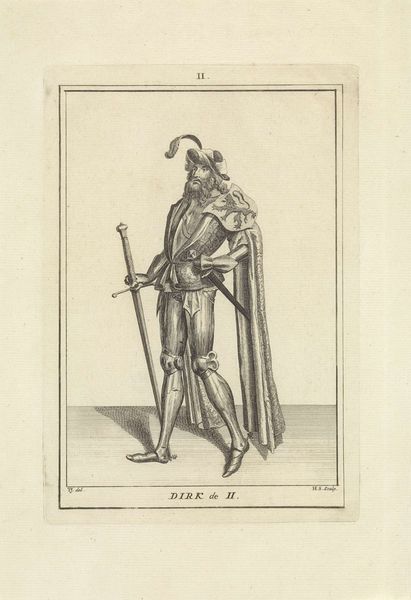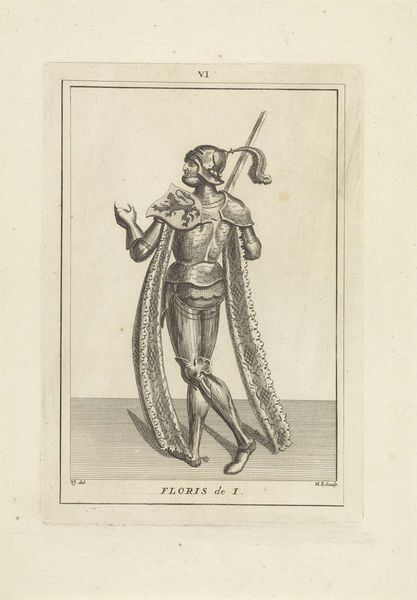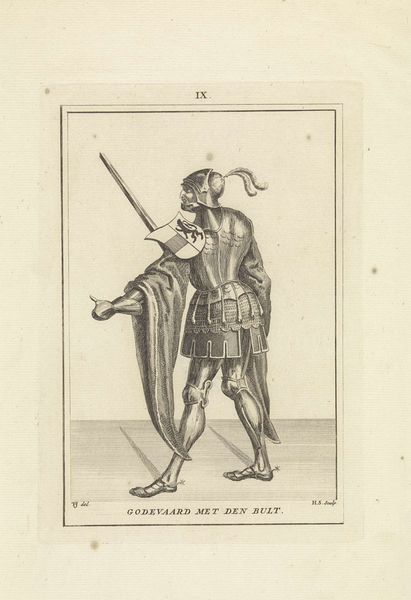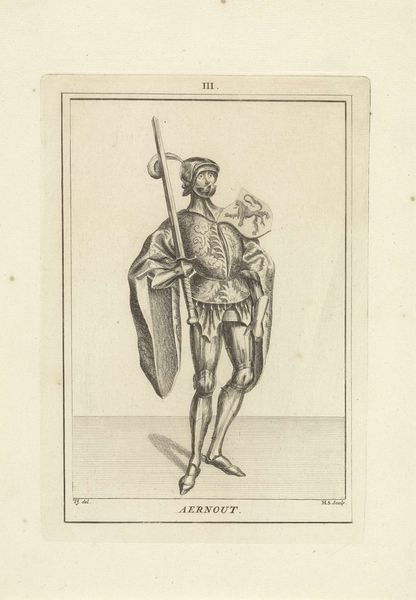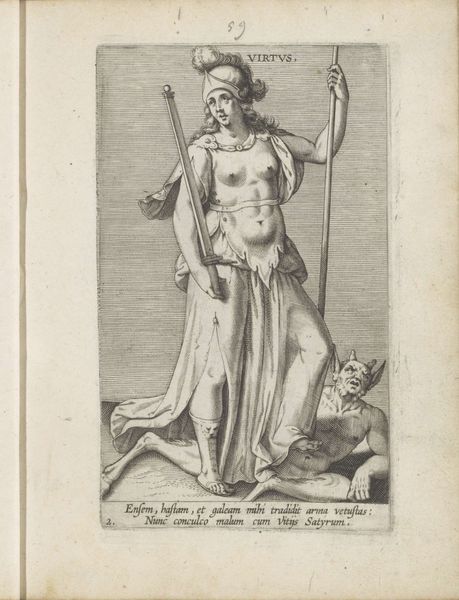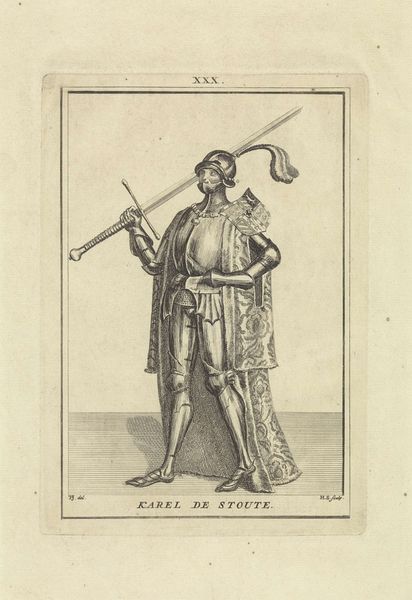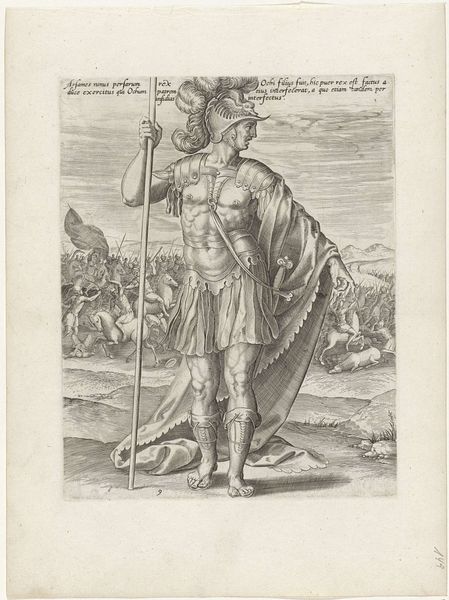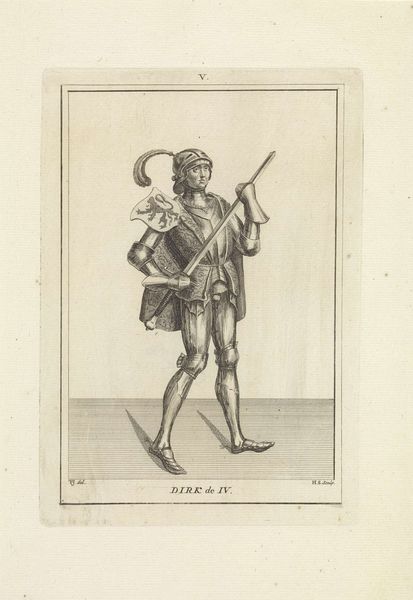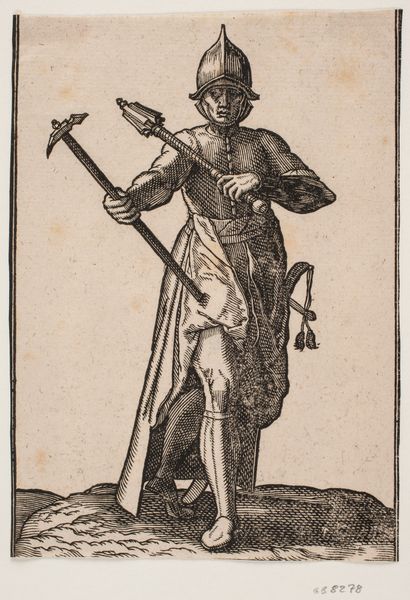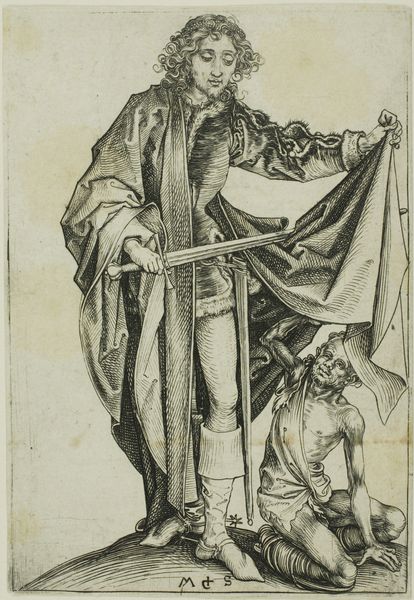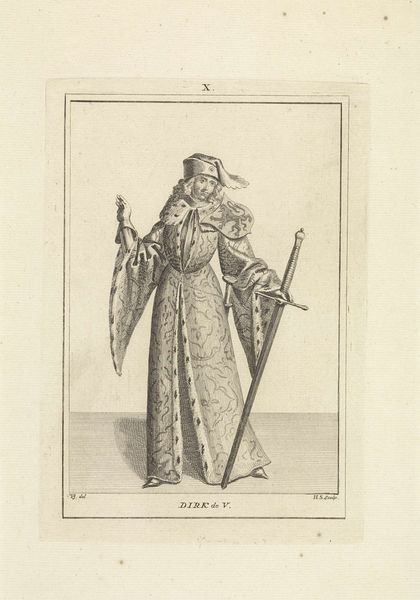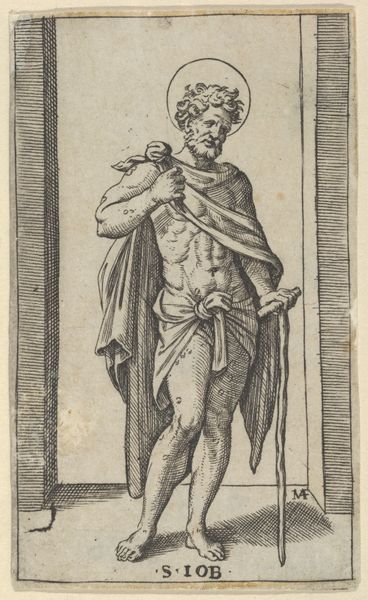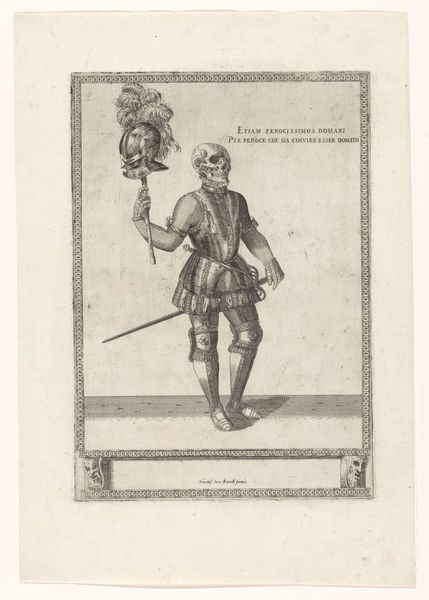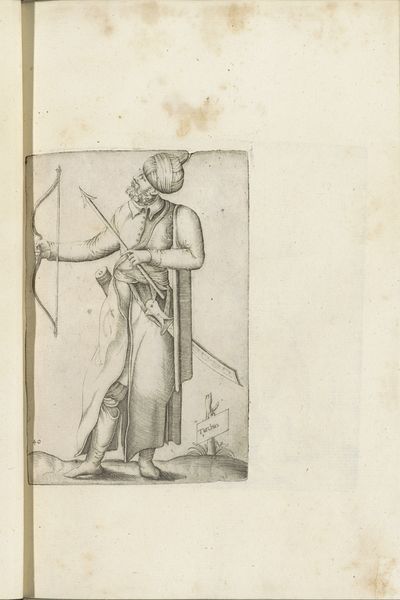
metal, engraving
#
portrait
#
baroque
#
metal
#
history-painting
#
engraving
Dimensions: height 192 mm, width 135 mm
Copyright: Rijks Museum: Open Domain
Editor: This engraving from 1745 by Hendrik Spilman, titled *Portret van Willem II, graaf van Holland en Zeeland*, depicts William II, Count of Holland and Zeeland. It’s currently housed in the Rijksmuseum. I find the figure so compelling, almost theatrical with the elaborate armor and cloak. What can you tell me about its cultural context? Curator: This portrait is ripe with historical and political commentary. While seemingly a straightforward depiction, it speaks volumes about the construction of power and identity in the 18th century. Think about it: Why choose to depict William II, who lived centuries earlier, during a period when the Dutch Republic was navigating its own political complexities? Editor: Interesting question! So, it’s less about historical accuracy and more about making a statement? Curator: Precisely. Consider the Baroque style – the emphasis on grandeur, the elaborate detail. What do these choices communicate about the desired image of leadership? Are we seeing a romanticized vision of the past used to legitimize contemporary authority, maybe even advocating for a return to monarchy at a time of Republicanism? Editor: That’s a different perspective than what I initially thought. I was mostly drawn to the aesthetics, but it's clear the artwork functions as a potent form of propaganda. How does this resonate with contemporary discussions about leadership? Curator: Absolutely. Think about today’s visual rhetoric around political figures. What symbols and styles are employed to project strength, trustworthiness, or even revolutionary change? Does this image encourage a critical examination of our current ideals of governance? Editor: I see what you mean. Thanks to your insights, I’m viewing it with fresh eyes, considering both the historical context and its resonance in contemporary sociopolitical narratives. Curator: Indeed. Analyzing such art necessitates a thorough interrogation, urging us to comprehend its relevance within present socio-political dialogues.
Comments
No comments
Be the first to comment and join the conversation on the ultimate creative platform.
